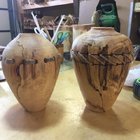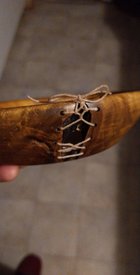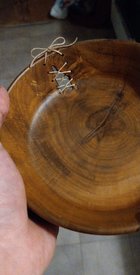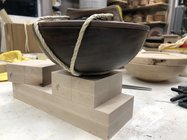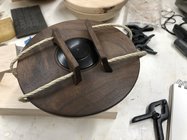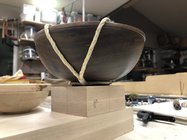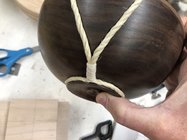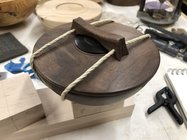I want to move along the learning curve with enhancements to my work and like the look of braided rope/cord, holes and burn lines in difference combinations. It's also something I think will be popular at my local makers markets. I've only made a few so far and since I had a big spool of natural jute string on hand that's what I used. There are lots of different kinds of leather cords and braided natural string available. Any inputs on ones that work better, look better, easier to work with? Any tips on tying off and securing the ends when done? I simply pulled it snug then carefully put some CA glue where the rope and wood meet up in the hole. If you look inside you can see my initial big starter knot and ends I've cut off. Not great and would like to be a bit more tidy inside the vessel. I plan to do the same to some bowls so certainly critical there.
